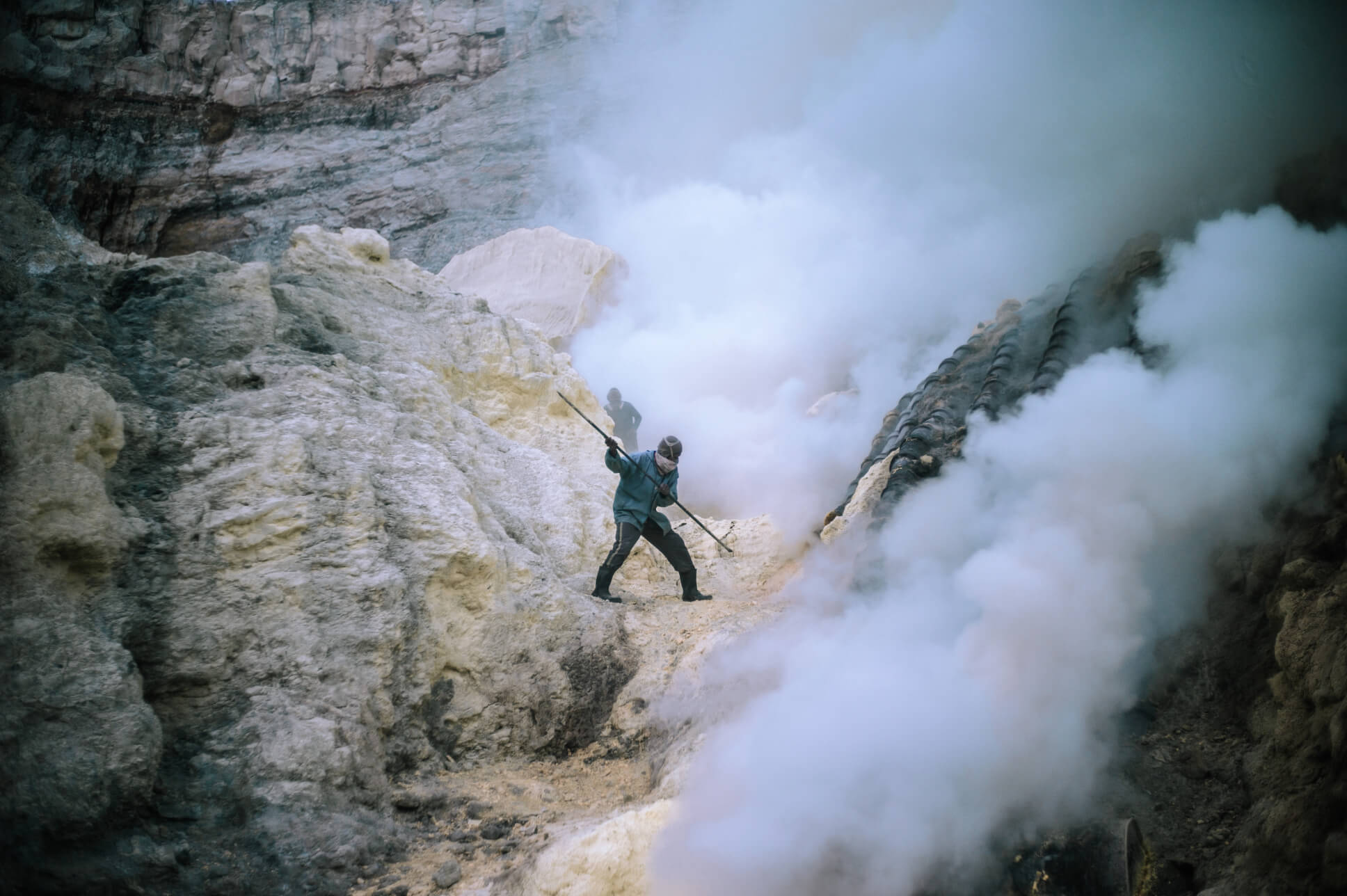
Ground zero of one of the world’s most hostile workplaces
Each day up to 15 tons of sulphur is manually extracted from the crater of an active volcano in Eastern Java.
Long before the sun rises each day in East Java, hundreds of workers climb deep into the crater of an active volcano to start their shift. The sky is black and the 300 metre decent is steep. The volcano has been known to erupt unexpectedly; the last incident in 2018 resulted in dozens of workers being hospitalised. The deeper the decent into the crater, the more toxic sulphuric gas the lungs will inhale. The prolonged exposure to sulphur means many of these workers won’t live beyond 50. On a windy day, the noxious hydrogen sulphide and sulphur dioxide fumes will change direction at any given moment, drenching workers in toxic smoke. The only respite is to get down, and stay down, until the wind changes direction. In the last four decades, dozens of workers have been killed by sudden outbursts of poisonous gases. Welcome to ground zero of one of the most hostile working environments in the world.
Located in the in the most eastern part of the Indonesian island of Java, the Mount Ijen volcano stands at 2386 metres tall and is home to the greatest acidic lake on earth, Kawah Ijen. But the magnet that draws up to 300 workers here on any given day is the Sulphur rock reserves buried deep within the heart of Ijen’s crater. Sulphur is the essential ingredient found in many commercial commodities such as white sugar, detergent, fertilizers, matches, insecticides, fungicides, medicines, batteries and rubber. Without it, we consumers would have to learn to live without a wide range of products that have become essential to our lives. It’s so common that we often don’t even know it exists, let alone stop to consider where it comes from.
While many sulphur mining operations across the world are highly regulated and machine operated; the sulphur at Kawah Ijen is extracted manually. Workers hack at the surface with a crowbar until enough slabs of yellow rock have been mined Workers hack at the surface with a crowbar.to justify making the trek back out. Some workers use nothing more than scarves and rags to protect themselves from the sulphur dioxide fumes that will inevitably swallow them up in clouds of smoke. Once they’ve mined enough slabs to fill 2 bamboo baskets, they begin transporting it out of the crater to the weighing station 5km away. In the absence of machines, there is no easy way to do this, meaning workers place baskets on either end of a pole and manually haul 70-100kg of rock up the steep vertical rim of the crater. The physical consequences can be seen on some of the scarred shoulders, bended knees and disfigured backs of workers. They’ll do this twice a day for a payout of between US$10-US$20, depending on the size of the haul.
Long before the sun rises each day in East Java, hundreds of workers climb deep into the crater of an active volcano to start their shift.
The deeper the decent into the crater, the more toxic sulphuric gas the lungs will inhale. The prolonged exposure to sulphur means many of these workers won’t live beyond 50.
Many use little more than scarves and rags for protection in an environment where a chemical suit wouldn’t look out of place.